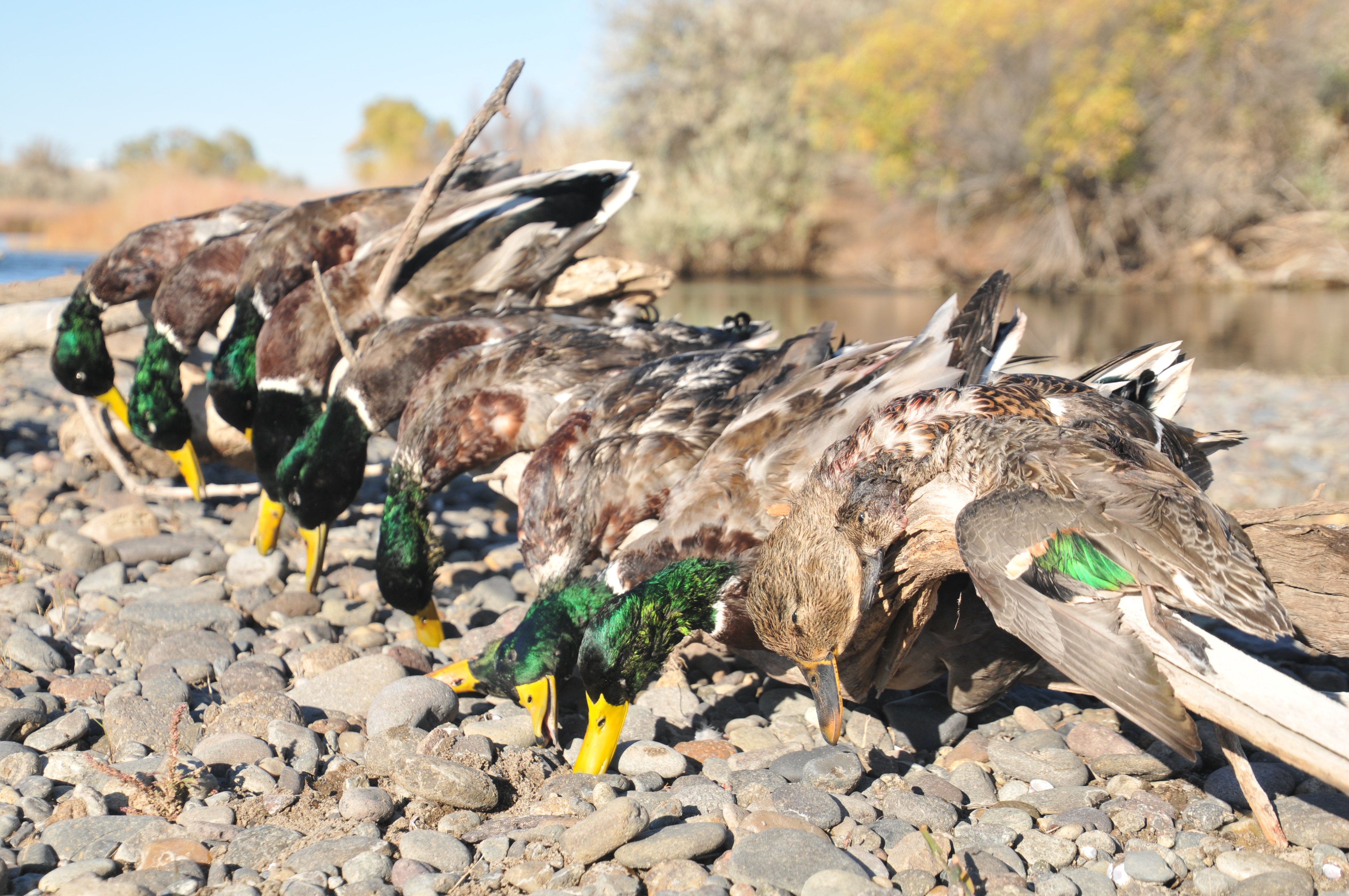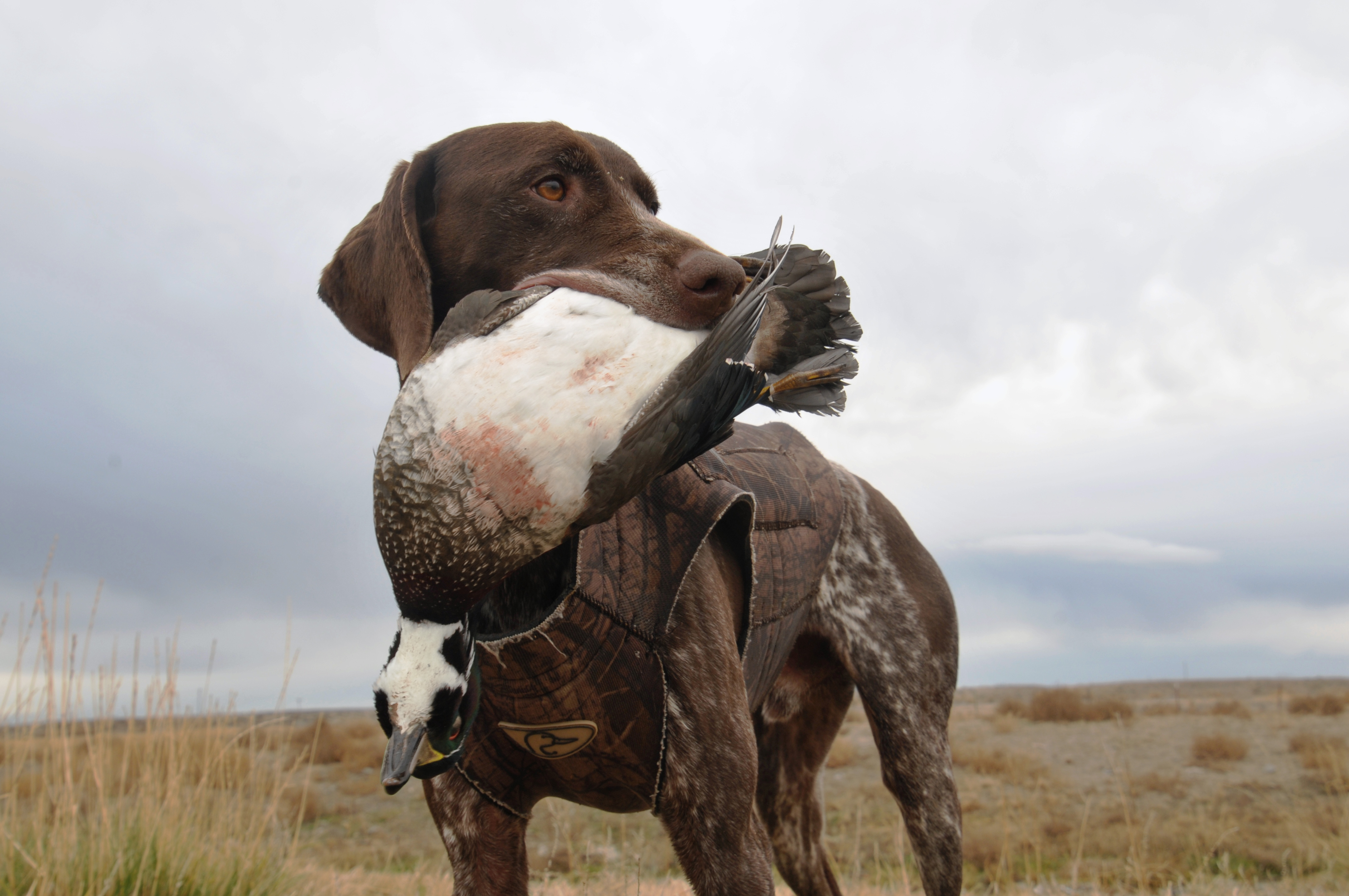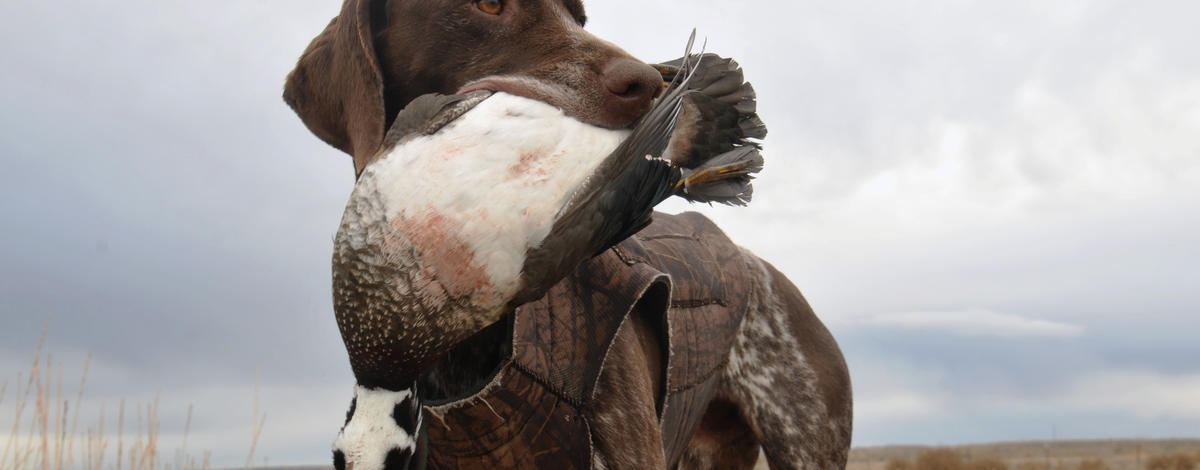By Joshua White, Regional Wildlife Habitat Biologist
C.J. Strike Wildlife Management Area is an important stop-over location for waterfowl during both the spring and fall migration, providing critical food resources for ducks and geese migrating to nesting or wintering grounds, as well as an excellent hunting opportunity for waterfowlers.

WMA is located along the Snake and Bruneau Rivers in southwestern Idaho. In addition to wetlands, rivers, and the large reservoir, the lands adjacent to the WMA are made up of agricultural fields and irrigated pasture. Habitats within this local landscape make C.J. Strike WMA an ideal location for waterfowl, and the area typically holds 30,000 to 80,000 ducks and geese throughout the season.
The majority of the harvest in this area consists of mallards and Canada geese, although other waterfowl species routinely show up in the harvest; American wigeon, northern pintail, American green-winged teal, gadwall, and even wood ducks. There is also opportunity to harvest goldeneye (Barrow’s and common), and other diving ducks, although these species are more typically found on the Snake River.
Waterfowl abundance is dependent upon weather patterns, and timing of the fall and winter flights may be early or late depending on the year. In a typical year, weather begins to turn cold during mid-November and decent numbers of ducks and geese start arriving. However; quality hunting can be had for those willing to scout throughout the season.

Prior to hunting, waterfowl hunters should check over the current waterfowl regulations to ensure they are following all hunting rules including non-toxic shot only, a plugged shotgun (shotgun must only be capable of holding three shells), a current year hunting license, migratory bird registration, and federal waterfowl stamp. If hunters choose to hunt both waterfowl and pheasants at the same time, it is unlawful to have any lead shot on your person or in your boat. Hunters pursuing pheasants on the WMA must also have a valid WMA Pheasant Permit as well.
The following information is not all inclusive, and is meant to provide users with a starting point to navigate waterfowl hunting opportunities on the WMA and surrounding areas. Hunters should spend time watching waterfowl and figuring out where and how to access those locations.
Walk-In Access:
The WMA encompasses lands bordering the C.J. Strike Reservoir and Snake River, as well as isolated tracts along the Bruneau River. There are many options to find quality walk-in access across the WMA, and hunters should spend as much time as possible scouting online while referencing access points on the area map. Additionally, there is no substitute for spending time on the ground watching what habitat waterfowl are using. Hunters are responsible for knowing where they are at on the landscape, and must respect private land; ask first. There are several resources available through smartphone applications and GPS to assist hunters in knowing where they are.
Jacks Creek
This access point is located along the Bruneau Arm of the reservoir off of Highway 78, east of the WMA Office. Good walk-in access can be found at this point, although hunters should be sure to bring chest waders. At this access site, the Bruneau Arm gives way to the delta, which is a series of braided channels and marsh/wetland habitats. For those willing to spend some time stomping through thick cover, isolated pockets of water routinely hold good amounts of waterfowl and can yield quality hunting opportunities.
Bruneau Floodplain
Hunters may access this area through 2 parking lots located on Highway 51 just south of Bruneau, Idaho and off of Colyer Road at the IPC parking lot. Within this area, hunters can access several wetlands within the floodplain or delta, as well as the Bruneau River. If the reservoir freezes over, some of these isolated spots, especially the Bruneau River can become very productive. Hunters should look to pockets of open water holding ducks, and using a small boat (canoe, kayak, etc.) may help facilitate finding an out of the way place holding waterfowl.
Bruneau Duck Ponds
The Bruneau Duck Ponds area is a series of wetlands fed by a pump from the Snake River, which feeds a large wetland basin called the Bruneau Duck Pond. This area is part of the Loveridge Habitat Segment and contains multiple walk-in hunting opportunities. In addition to the duck ponds, there are several wetland basins adjacent to the Snake River, as well as several side channels that are shallow enough for hunters to wade across.
Hot Springs
There are limited waterfowl hunting opportunities on this portion of the WMA, but for those willing to walk a bit there is public access to the Bruneau River through this segment. In addition, there are several sloughs and irrigation canals that bisect the property that can hold ducks, especially when conditions are such that the reservoir is frozen.
Ted Trueblood Habitat Area
Ted Trueblood is within the Bruneau Habitat District and lies immediately north of Grand View along the Snake River on the west side of Highway 167. This habitat area has three impounded wetlands that provide excellent walk-in hunting opportunity for ducks. Users should consult the area map prior to hunting, as there is an interior wetland that is private property. Users should also note that runoff water that partially fills the wetland basins during certain times of the year has tested positive for Coliform bacteria and E. coli.
Boat Access
Jacks Creek
There is a boat ramp at the Jacks Creek access. This portion of the Bruneau Arm is fairly shallow, and larger boats should use caution if trying to navigate the delta. Ideally, small watercraft should be used with a short-shaft, shallow drive motor, or a canoe.
Cottonwood
The access road to the cottonwood boat ramp is located along Highway 78 to the west of the WMA Office. This access is near the middle of the Bruneau Arm of the reservoir and should be used when scouting the narrows and the Bruneau Arm. Be careful of ice-out conditions as the season progresses.
North Park
The North Park boat ramp is located along the north side of the C.J. Strike Reservoir, northeast of the dam. This access is a good point to utilize when trying to access the main body of the reservoir or the segment of the reservoir between North Park and the Loveridge Segment. Waterfowl numbers pick up later in the year on this portion, and islands, coves, and out of the way shorelines can provide fantastic hunting opportunity.
Grand View (Snake River)
The boat ramp is located on the south side of the bridge at the Snake River, on the east side of Highway 167. This stretch of river can be shallow depending on water levels, and boat operators should use extreme caution when running the river. If users are inexperienced with this stretch, they should navigate the river during the day to learn where the hazards are. The boat ramp is in good condition, but can be problematic for users not accustomed to loading and unloading in the Snake River.
C.J. Strike Dam (Snake River)
There is a boat ramp located on the south side of the Snake River, below the C.J. Strike Dam. This ramp is extremely steep, and can become ice-covered after one use during freezing conditions. IPC recently removed a large volume of sediment, making the ramp more user friendly. This ramp should be used with caution.
Loveridge North & South
There are 2 boat ramps that can be used to access the Loveridge Segment of the Snake River on the east side of the Snake River at Loveridge Bridge on Highway 51. There are quality ramps on both the north and south side of the river. Quality hunting can be found up and downstream of the bridge. A little time scouting prior to setting decoys will help new hunters locate birds and should improve their odds of having a good shoot.
Hunting Private Land
Migrating waterfowl utilize agricultural fields that have been cultivated as a food resource. During the later portion of the season, large flights of waterfowl leaving C.J. Strike Reservoir and Snake River can be seen heading to feed in all directions. A good way to find the location is to follow these flights and observe which field they land it. It is illegal to hunt cultivated or agricultural fields without first obtaining permission from the landowner. Remember, always ask first, and be respectful. Even if the landowner does not grant you permission, it doesn’t mean they still don’t appreciate you asking, and may so in the future.
For more information contact the C.J. Strike WMA Office at (208) 845-2324.

